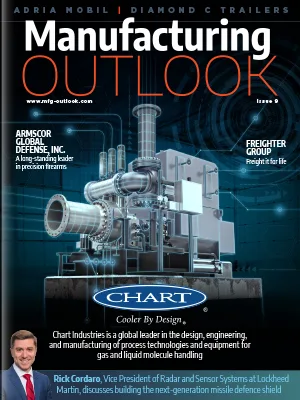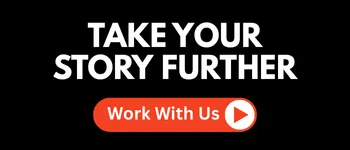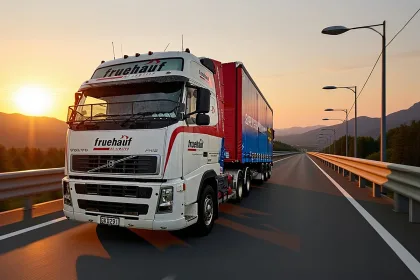Working tirelessly to take a mess and leave a difference, New Pig has established itself as the world’s best for leaks, drips, and spills. We learn more about the company’s incredible journey to becoming the ultimate partners in grime with Chairman and CEO, Clark Stapelfeld.
FROM PIG PEN TO POWERHOUSE
More than four decades after a fateful experiment with pantyhose and ground corn cob kicked off the start of a new industrial category, New Pig remains the name hundreds of thousands of facilities worldwide trust for a cleaner, safer, and better workplace – whilst also remembering to have a little fun in the process.
Over that same timespan, New Pig’s parent company, New Pendulum, has quietly built a diverse portfolio of 14 entities and is now increasingly visible internationally as it delivers further acquisitions.
Today, Clark Stapelfeld holds dual roles as Chairman and CEO of New Pig as well as CEO of New Pendulum.
“In 1985, my father, Ben, was running an industrial cleaning business that involved after-hours crews cleaning manufacturing plants to prepare them for the next shift.
“Pretty quickly, he realized the real drag on efficiency wasn’t general cleaning and preparation; it was in cleaning up fluids – oils, coolants, and everything else that found their way onto floors,” he introduces.
At that time, the standard of the day for dealing with spills was to employ loose clay granules that were heavy, dusty, and inefficient to use or clean up.
Beginning with the goal of making the company’s own clean-up operations more efficient, the tinkering began as they cut up pantyhose and tried every filler they could think of – from sawdust to rice hulls – ultimately landing on ground corn cob.
“It was a very well-suited material in a variety of ways, namely because it was light, highly absorbent, and readily available from the surrounding farms of Central Pennsylvania.
“That’s effectively when the first iteration of our PIG Original Absorbent Sock was born, and it would go on to change how facilities handled leaks and spills forever,” Stapelfeld sets out.
It wasn’t an overnight success, however, as initial market adoption of this new way of handling spills, like many start-ups in new categories, was difficult, inconsistent, and had quite a few false starts.
THE PATH TO MARKET
The largest obstacle to New Pig’s successful market entry at the time was that distributors, the most conventional path to selling industrial products, were proving to be very difficult to penetrate.
“Simply put, industrial distributors at the time weren’t interested in putting in the effort to educate the market to sell what was a new product category. They also made it especially evident that they weren’t willing to do so for an unknown start-up,” Stapelfeld recalls.
After a number of rejections from industrial distributors, the decision was made by the company to sell its products directly to manufacturing plants, namely through what would be referred to as a ‘mail order catalog’ at the time.
“Cataloging was an approach that may have been proven through the retail channel by companies like L.L.Bean, but it was not an approach that was applied to the industrial business-to-business (B2B) domain.
“We would then begin publishing what would be referred to as the ‘Pigalog’ which, despite being a lift in terms of creation, would allow us to directly control our approach to educating the market,” he adds.
Furthermore, the decision to diverge from the norm and speak directly to customers was a foundational decision for both New Pig and New Pendulum.
Fast forward to today and management of the latter includes many of the same people who play leadership roles at New Pig – and that is by careful design.
“We have proven our approach and built unique competencies in the success of New Pig over more than four decades, so our belief is if we seek to create similar levels of performance in other companies, those leaders and competencies are a natural fit,” Stapelfeld notes.
This structure represents a prominent strength for New Pendulum as it has built significant in-house resources to help ensure the success of any new acquisition.
The company doesn’t have to rely on outside consultants thanks to a system and standards built from direct experience and an established history of success.
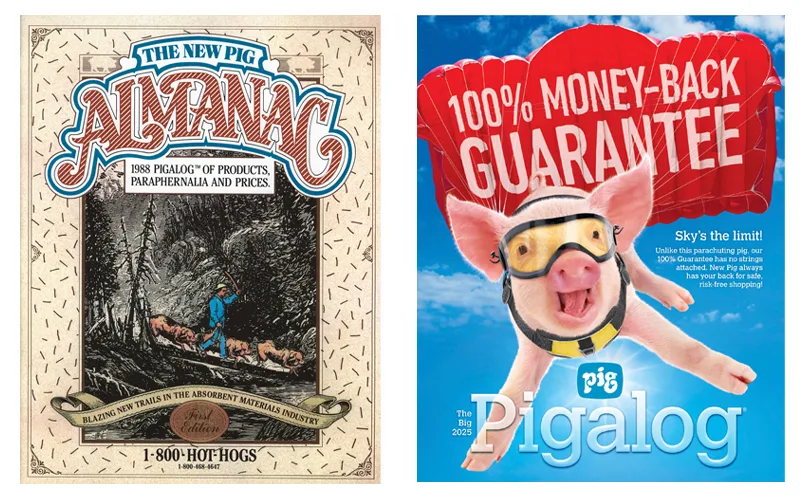
BUILDING THE BRAND
Looking back at the company’s history and where New Pig is today purely from a business case perspective, it’s clear to see that its initial approach created a cascade of unique conditions.
“It took one central facet of difference – our path to market – and that facet influenced everything we do. In the lives of many organizations, there are a relative handful of decisions and outcomes that have outsized impacts downstream, and this was one for us,” Stapelfeld affirms.
For example, its early reliance on the Pigalog to represent the brand meant New Pig needed to be able to create and house all the various assets in order to create a product catalog every month.
“Therefore, we effectively have an internal ad agency at New Pig, from copywriting and photography to design and project management.”
When an organization has that frequency and volume of product messaging pushing into the market, it necessitates the ability to capture customer feedback and questions to be able to modify those messages, which led to the company having a robust feedback reaction function and processes.
“Capturing and routing those verbatim questions from customers then led to a significant amount of product development ideas, around which we built new product offerings and market segments,” he explains.
Arguably, the most important by-product of New Pig controlling its messaging in the market was that it allowed the company to create its own voice and identity, as well as building its brand directly in the minds of customers.
“Every time we released a new product or service, we were able to describe the development story, applications, and differentiators fully, as well as using what would become our trademark humor.”
A UNIQUE PORTFOLIO
Ultimately, what would become especially unique in the industrial space is that New Pig built a brand and portfolio of products without having its story dampened through multiple steps of distribution or dependence on the translation of a message through third parties.
“It’s the classic ‘telephone game’ dynamic – only so much of the intended message will find its way through the chain of translation,” Stapelfeld acclaims.
“Somewhat ironically, it was our ability to build a strong brand and proven product portfolio ourselves that later made us attractive to the industrial distributors that were initially uninterested.”
As such, the New Pig identity went from an unknown start-up to a brand that customers were actively asking their distributor sales reps for – a demand from customers that would prove essential.
Over the coming years, New Pig would grow into the number one industrial absorbents brand worldwide, helping facilities respond to every type of leak, drip, and spill imaginable.
“We currently sell nearly 10,000 products and have expanded our mission around the goal of ‘Cleaner, Safer, Better’,” he prides.

FRESH OPPORTUNITIES
As demand increased for core New Pig products, this upswing also began to drive interesting opportunities organically to extend the company’s product lines and capabilities.
Sometimes, this would involve partners and vertical integration opportunities, whereas on other occasions, early-phase or start-up opportunities would come into play, whether in New Pig’s core spaces or adjacencies.
“Interestingly, over time, external leadership teams saw how we conducted ourselves and our business, and that began to be a significant source of discussions.
“In essence, owners would see parallels or similarities between New Pig and what they would want for their own company, and that would be the basis of their reaching out to New Pendulum,” Stapelfeld expands.
In the past, New Pendulum was very much a silent entity providing financing and high-level strategic guidance for companies.
However, in the past two years, New Pig has been shifting toward New Pendulum being more visible and aggressive in positioning itself to grow the broader family of companies.
“It’s been an organic process in many ways – like-minded individuals building like-minded organizations and cultures. It’s an exciting time for us, and it’s exciting to see the reception we get when talking to potential acquisitions,” he muses.
As such, understanding other businesses and their needs is always interesting for New Pig.
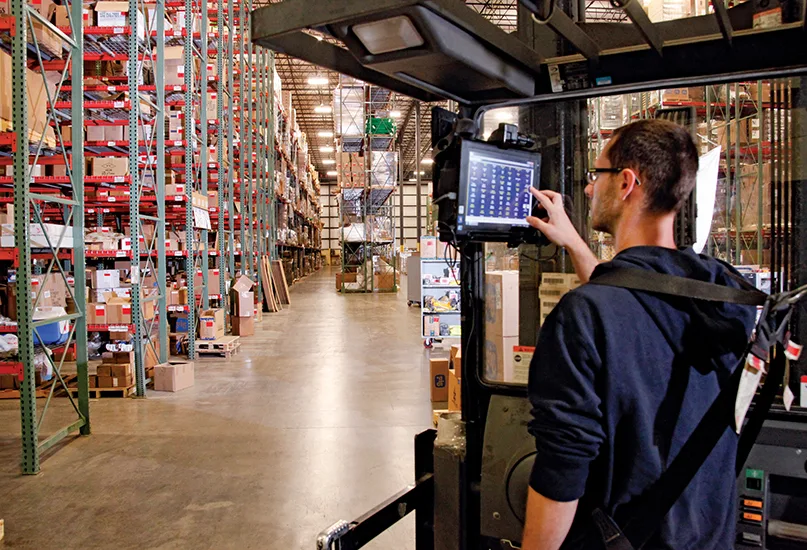
DIVERSE GROWTH
New Pig prides itself on being a family-managed corporation that acquires and builds for the long term.
“Over the decades, we’ve added and held companies that fit our criteria and benefit from shared capabilities. One of our holdings sells across 13 distinct channels; another works with more than 1,300 distribution partners,” Stapelfeld tells us.
Even with that diversity, the center of gravity for New Pig is B2B and the needs of modern manufacturing.
That said, the company employs a ‘go anywhere’ strategy and considers numerous potential organizations across a wide spectrum of sizes and categories.
“We’re realistic about organic growth in a nearly 40-year-old enterprise – it’s important, but not the whole story.
“Acquisitions let us extend strengths into adjacencies where our core capabilities, such as omnichannel sales, marketing, operations, and sourcing, can create durable value. We don’t buy to flip – we buy to invest,” he asserts.
Furthermore, New Pig’s integration approach is extremely hands-on.
“When looking to acquire, at present, we see a real path for long-term growth, and we have the resources and people to help a company get there. That’s one reason 13 of our 14 historical acquisitions remain in the portfolio today.”

“Acquisitions let us extend strengths into adjacencies where our core capabilities, such as omnichannel sales, marketing, operations, and sourcing, can create durable value. We don’t buy to flip – we buy to invest”
Clark Stapelfeld, Chairman and CEO, New Pig
PART OF THE FAMILY
One factor that underscores how New Pendulum is different from the competition is that while the family of companies might use acquisitional language, it doesn’t ever internally refer to its portfolio as such.
“The word portfolio works against how we view and operate, and when used in the investment sense implies a certain impersonal, ‘buy low, sell high’ mentality that most would associate with private equity. That’s definitely not our style or who we are,” states Stapelfeld.
“Instead, we refer to New Pendulum as a family of companies because for us, mutual respect is the ground floor – internally, externally, everywhere.”
New Pendulum uses this term because families share values without being identical, and when a company joins, it doesn’t try to turn it into a carbon copy of New Pig.
“Some of our businesses are relationship-heavy and others are transactional. Meanwhile, some are technical and regulation-driven, and others are elegantly simple. The common thread is ultimately building the right experience for the customer,” he continues.
“We’ve learned as much from acquisitions as they have from us. That’s the point – we get better together.”
THE PIGGER THE BETTER
New Pig is the flagship brand of the New Pendulum family and now widely recognized as the worldwide leader in leak and spill management and clean-up products.
The current line-up spans thousands of products – everything from the original PIG Mat and absorbents to spill kits, stormwater and drain protection, and large-scale containment products.
“In the past decade, we’ve expanded successfully into commercial and retail environments with solutions that reduce slips, trips, and falls – led by the PIG Grippy Mat, our adhesive-backed floor safety mat that stays put,” Stapelfeld gushes.
“We rally around our mantra of ‘Cleaner, Safer, Better’ as we realize we have significant room to operate beyond just our core domains.”
Additionally, New Pig operates several international units tailored to local needs in the UK, Europe, India, and China. Each of those units runs autonomously to serve customers and regulations in each specific region, and their structures are mirrored appropriately to those needs.
“In 2011, we built out New Pig Energy to focus on engineered containment for shale gas operations, specifically well pad liners, berms, and other specialized systems for oil and gas drilling environments,” he elaborates.
This was a direct example of having the aforementioned customer-centric processes in place, as the company began hearing applications coming from the shale plays that it didn’t have solutions for at the time.
As a result, New Pig started listening and developing products, and it grew into its own organization – one which has since installed over 100 million square feet of well pad liners to date.
“We rally around our mantra of ‘Cleaner, Safer, Better’ as we realize we have significant room to operate beyond just our core domains”
Clark Stapelfeld, Chairman and CEO, New Pig
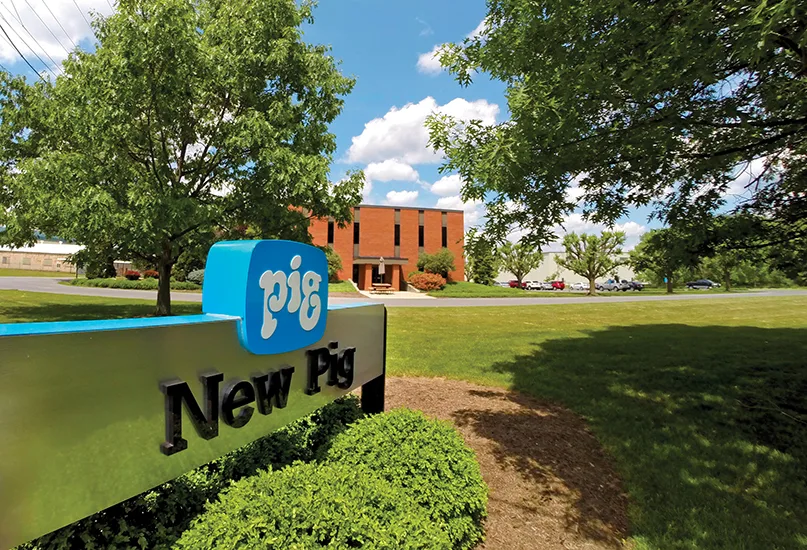
RESPONSIBILITY AND PURPOSE
Today, remaining practical and purpose-driven is the company’s mandate for sustainability.
“In the case of New Pig and our international entities, SpillTech and New Pig Energy, those businesses are directly focused on preventing harm to both people and planet,” Stapelfeld sets out.
From helping facilities worldwide comply with environmental regulations to providing a range of products for environmental clean-up and protection and worker safety, New Pendulum’s companies tend to play a very direct and tangible role in sustainability efforts.
On the process side, it has invested in tools and services that help to make spill risk management attainable for customers, a significant aspect of sustainability for many.
One example is New Pig’s Spill Risk Algorithm, a patented methodology that helps facilities identify their unique spill risks and improvement paths.
It’s become a structured way for plants to prevent incidents, avoid fines, and prioritize high-value fixes.
“We’re fortunate to have people who live this and can make it attainable for our customers and partners. For example, Andy James, Vice President of Marketing at New Pendulum and CMO at New Pig, has taught sustainability-driven innovation for over a decade at Pennsylvania State University, translating purpose into process for graduate students and practitioners,” he follows up.
This kind of ‘practical rigor’ is what New Pendulum wants across its companies in terms of how it approaches sustainability.
“Our European operations have also recently achieved carbon neutral status and have begun their future planning. It’s a journey, and we’re all trying to take practical and impactful steps wherever they are practical and practicable.”
NAVIGATING THE NEAR-TERM
Across nearly every domestic manufacturing measure for the last two years, conditions have been challenging for everyone associated with the vast industry in which New Pig operates.
New Pendulum has recently been navigating the same macro headwinds and complexities for its businesses, especially those concentrated in manufacturing and industrials.
“We have been resilient and continue growing. Regardless of the prevailing conditions, our job is to keep showing up with excellent products and services, keep moving forward in every aspect within our control, create additional facets of control and stability wherever we can, and adapt to those conditions we can’t control – that’s been the play for 40 years,” Stapelfeld ascertains. –
However, the company has always believed one positive aspect of this challenging environment is that it allows younger employees and newer functions to be pressure-tested.
“The past few years have been especially effective in helping us understand where we can get better as an organization and those people in our rosters who are especially talented under pressure and varying conditions.
“It’s the organizational application of the old adage – ‘smooth seas do not make skillful sailors’,” he cites.
In this way, the company will continue to expand its offering where it’s truly useful and keep sharpening how it serves clients, both digitally and through partners.
“At New Pig, I want us to take a very strong brand into the segments where our analysis says we can make the biggest difference. That means continued investment in product development and, just as importantly, in the systems that make our experience easy and reliable for customers.”
In terms of maintaining a playful brand personality aligned with serious performance, Stapelfeld believes the industry is serious enough already and the company is therefore focusing on protecting people, the environment, and uptime.
“We’ve found that a little levity helps ideas to stick and people to have fun. The brand’s voice makes the complicated more approachable, but the product must still always deliver,” he boldly concludes with a smile.






